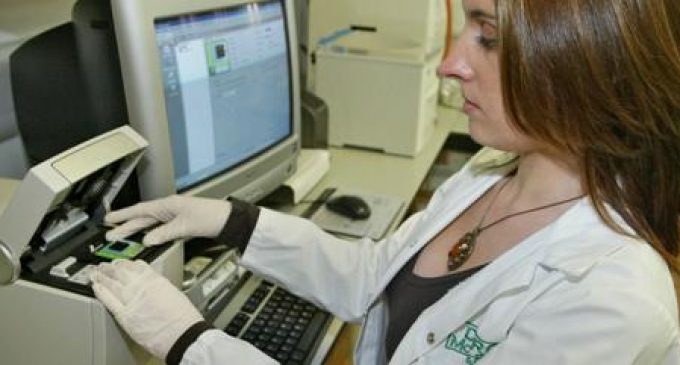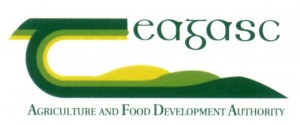Teagasc Research Impact Highlights in 2019

Teagasc (Irish Agriculture and Food Development Authority) has highlighted the impact of some of its research in a new publication –Teagasc Research Impact Highlights in 2019, which is now available on its website. These examples of impact build on the excellent peer reviewed publication record of Teagasc researchers with over 600 articles published in 2019, and result from the many competitively-funded projects that Teagasc wins to complement its own funded programme. In any given year, the impact of Teagasc research is a combination of the continuing impact of past research, and the new impact of recent research.
The highlights are drawn from the four research programme areas in Teagasc: Animal and Grassland Research and Innovation programme; Crops, Environment and Land Use programme; Food programme; Rural Economy and Development programme.
 “This publication highlights some of the new impacts achieved in 2019. The examples selected are from across our programme from soils to our gut,” says Professor Frank O’Mara, Director of Research in Teagasc. “As an organisation that conducts mainly applied research, we work hard to ensure our research programmes will have impact and are relevant to the Irish agricultural and food sectors”, he added.
“This publication highlights some of the new impacts achieved in 2019. The examples selected are from across our programme from soils to our gut,” says Professor Frank O’Mara, Director of Research in Teagasc. “As an organisation that conducts mainly applied research, we work hard to ensure our research programmes will have impact and are relevant to the Irish agricultural and food sectors”, he added.
Four of the 20 examples included in the publication are outlined below.
Using white clover to reduce Nitrogen fertiliser input
White clover is well suited as a sward species in grazed grassland. White clover can fix atmospheric nitrogen (N) and make it available for plants growing in the sward. Additionally, white clover is known to have greater nutritive value for animal production, particularly when grass quality declines during the reproductive phase in the summer. A project by Dr Deirdre Hennessy and colleagues at Teagasc Moorepark, comparing the productivity of grass-only swards receiving 250 kg Nitrogen per hectare (N/ha) per year with grass-white clover swards receiving 150 kg N/ha per year in dairy cow milk production systems has shown that herbage production is the same between the two sward types, and milk production per cow is greater in the grass-white clover system (+30 kg milk solids/cow per year). Additionally, the farm gate N balance is improved as 100 kg N/ha less is applied on the grass-clover system and the N exported in milk solids is greater. Based on results like these, all grassland farmers applying for derogation from the Nitrates Directive from 2020 onwards have to include a minimum rate of 1.5 kg naked clover seed per ha in the seed mix for all reseeds.
Teagasc National Farm Survey 2017 Sustainability Report
This publication reports on the economic, social, environmental and innovation dimensions of sustainability at farm level using the Teagasc National Farm Survey. Economic (economic return and profitability of land, market orientation, productivity of labour and viability), social (household vulnerability, isolation risk, age profile, education and work-life balance), environmental (greenhouse gases, ammonia, nitrogen and phosphorus loss risk) and innovation (various practices) results are reported in detail over the 2012 to 2017 period across dairy, cattle, sheep and tillage farms. The report prepared by Dr Cathal Buckley and colleagues in Teagasc’s Rural Economy and Development Programme, received widespread coverage in the national media, particularly in the area of the environmental footprint of different farming systems across Ireland. The report is an exemplar for other organisations to follow internationally, and is valuable for policymakers and the agri-food industry in understanding how best to focus continuing efforts to address farm emissions and contribute to national targets for gaseous emissions reductions.
Protecting soil structure
The increasing weight of machinery and a desire for timeliness in field operations, from crop establishment to grazing early grass, puts increasing pressure on our soils. The maintenance of soil quality is essential to allow it to continue to support production and provide ecosystem services such as nutrient retention and water management. Soil structure damage must be prevented but practical tools to assess this damage have not been available for growers and their advisors to assess their soils. In recent collaborative research projects, Teagasc (Johnstown Castle and Oak Park) and UCD have evaluated and developed a range of soil structure techniques for assessing soils. Visual assessment techniques, such as visual evaluation of soil structure (VESS), have been further developed for grassland use (GrassVESS), and a new visual assessment tool, DS, has been developed to assess soil structure in tillage soils, focusing particularly on the transition area between the cultivated topsoil and the subsoil. These techniques, which are simply described in a practical guide, The Soil Structure ABC, have been proven to act as an early warning tool on tillage soils – allowing structure differences to be detected before yields are impacted. They are changing farmers’ attitudes to soil management, as advisors and specialists, by using these techniques, now have the capacity to clearly illustrate the damage being caused to soils. Their use opens up a whole new era of soil management that should protect this critical resource.
Breeding for improved meat quality metrics in cattle
The permanent and cumulative properties of breeding strategies contribute to their usefulness as a strategy to continuously improve animal performance metrics, including meat quality. As part of a Meat Technology Ireland (MTI) project, a sensory panel was trained using descriptive analysis techniques to detect and describe small differences in meat quality characteristics in fresh beef samples. Genetic and genomic evaluations for meat tenderness, juiciness and flavour were developed and subsequently deployed by the Irish Cattle Breeding Federation, for dairy and beef cattle. This is the first international evaluation for meat quality based on data from trained sensory panels. The trained panel is also being actively used by meat companies to understand various aspects of beef eating quality. The work was carried out by researchers at Teagasc Moorepark and Teagasc Ashtown.
The full document can be viewed at
https://www.teagasc.ie/media/

































